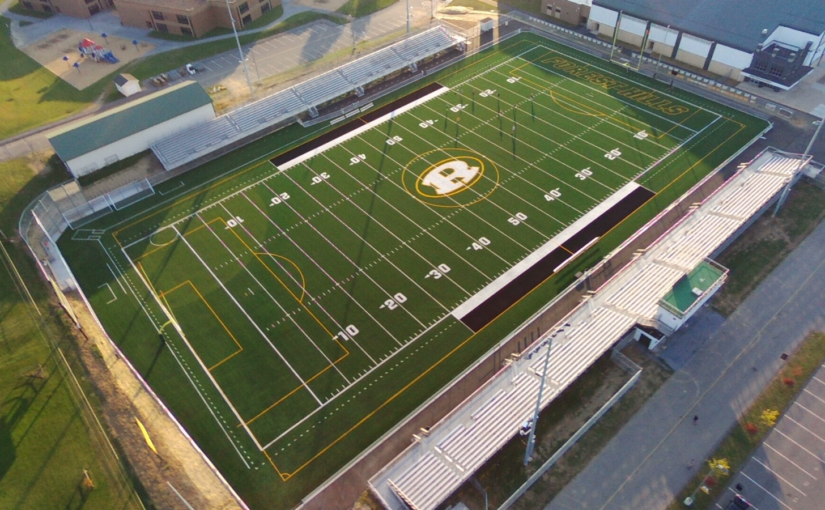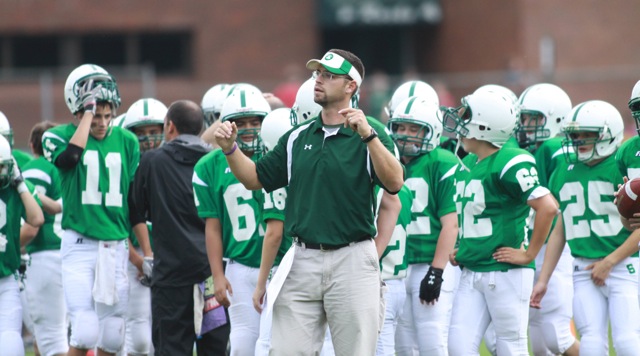Athletic Improvements: How a PA School District Implemented a $3.7M Improvement Project
In regions of the country such as the Midwest, weather can wreak havoc on a school’s athletic facilities. From springtime rainstorms to intense droughts in the summer and harsh winters, outdoor sports facilities see a wide range of elements.
In 2019, the Forest Hills school district in Sidman, Pennsylvania, began a $3.7 million project that included an expansion of the stadium (with new artificial turf), a new ticketing and concession building, and reconfigured visitor seating.
The baseball and softball fields were also changed from natural grass with artificial turf, and the school district renovated the track, as well as added new lighting and sound equipment to the stadium.Switching to Turf
“Prior to this project, we had the stadium field and another beautiful grass field on the same campus. That was where we played junior high football and junior high soccer contests, as well as varsity boys soccer and varsity girls soccer,” J.M. Gironda, the director of athletics for Forest Hills High School said. “Then we would use the stadium for our varsity football games and also for a select amount of varsity soccer games throughout the fall.”

But it was the years of repeated use, combined with the harsh and often unpredictable Midwestern weather, that was a large factor in the school’s decisions to switch to artificial turf on both the multi-purpose stadium field, as well as the baseball and softball fields.
“It just got so bad two to three springs ago … we had destroyed our nice grass field because it was such a terrible fall with rain,” Gironda said. “It’s just not a great setup with grass in our neck of the woods. When we have a nice fall, it’s a non-issue … but when it rains, it’s a huge issue.”
Gironda said that when it came to the decision making on the $3.7 million renovations project, the well-being of the student-athletes — especially those practicing in harsh conditions — was of the utmost importance.
“When you have to be indoors, practice gets repetitive and dull,” Gironda added. “Teams just want to get outside. It would be sunny and we still couldn’t get (our student-athletes) on the field because the fields were soaked. It’s discouraging when you’re not getting on your field until mid-April.”
Track, Lighting & Sound
Aside from the switch to artificial turf, there are a handful of other items that are either being renovated or have already been upgraded in the Forest Hills project.
The school’s track surface, which was previously an all-weather surface, had to have the undersurface completely torn out and refurbished because of the shape it was in due to the weather. And in the stadium, Forest Hills installed new lighting and sound systems to help create a more enriching experience for both players and fans.
But it wasn’t without challenges, Gironda said. Considering light spillage and noise pollution of nearby neighborhoods, while still ensuring a quality system, was the school district’s top priority.
“We have neighbors that can throw a rock from their backyard and it would land on our field,” Gironda said. “So (light spillage and noise pollution) was a huge concern of ours moving forward.”
Ultimately, Gironda said that the school was able to find solutions that not only took all of these factors into account but were able to install systems that allowed them unprecedented control.
“The lighting system we have, there’s hardly any spillage at all — the fixtures can be adjusted to make sure the light is exactly where it belongs,” Gironda said. “And the sound system is incredible. They put together a multi-tiered system where we can actually turn sections of it off, so all of that sound is right where it belongs and not heading out into the community.”
Advice for Future Projects
For projects as large as the Forest Hills athletic project, Gironda says it’s best to seek out athletic directors and contractors who have already gone through the processes for help and advice.
“I think the best advice I can give is you need to speak with other people in your area that have experience with these types of projects,” Gironda said. “If you have someone who has done it before … that’s someone who can potentially make this process a little bit easier to navigate.”





